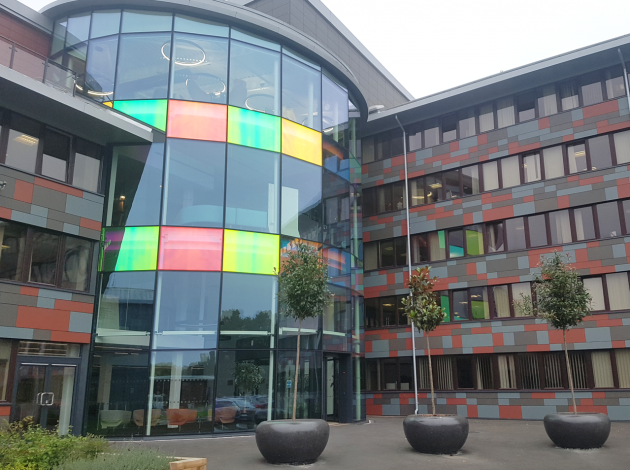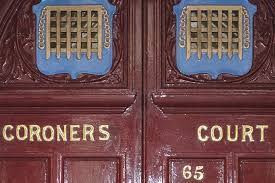David Best joined the Office for National Statistics two years ago and is, by his reckoning, a third of the way through an ambitious reform programme. He tells Rebecca Hill about heritage systems, culture change and thinking ahead
The ONS has worked to transform its “large and extensive” legacy estate
“Five years down the track, will we have websites? Will there even be apps?”
David Best, director of digital services at the Office for National Statistics, likes to plan for the future. But, as some organisations lumber towards it a micro-step at a time, Best wants the ONS to be not just prepared, but leading the way.
For him, this means planning for a time when websites are “much less important”; when people don’t pick up a phone, laptop or tablet to search for answers, but instead use augmented reality, head-up displays and voice-driven products.
“We’re experimenting in the innovation part of the business with using Alexa and Echo – so we can sit at the breakfast table and say, ‘Alexa, what was GDP last month?’,” he tells PublicTechnology.
“At the moment, the way we provide data doesn’t allow that inquiry from a user – so we’re looking at producing our datasets in a publishable way to respond to voice action commands.”
Although the ONS is not quite at that stage yet, this thinking influences the way it works today. For instance, Best says, the organisation is focusing on disaggregating previously monolithic applications and creating flexible systems that allow them to “plug and play”, replacing individual components or products at a lower cost.
“A plug-and-play approach enables us to take off-the-shelf stuff that other people have invested [a lot of money] to produce,” says Best.
Skype for Business – which the ONS will switch to this year – is a good example, he says.
“If we were to do it in a conventional way, we wouldn’t be able to take advantage of those market developments.”
‘Highly secure – but quite limiting’
Best came to government in 2013, having spent decades working in the private sector, and was enticed by the “interesting challenges” he saw in the public sector.
“I’ve been involved in digital since ‘92, and there are very few examples [during] that period of time where the things that are being done are as exciting as the things we’re doing here,” he says. “There’s a lot going for the public sector at the moment.”
Initially, he worked at the Government Digital Service, then led digital transformation at the Ministry of Justice for six months before taking up the technology reigns at ONS – which was, Best says, “a very good quality, but quite conventional, office”.
Recounting the way things used to be, Best says data used to be securely transported on CDs packed away in locked boxes.
“It’s not surprising that, at a time when the safest method of transfer was physical media, that’s the way it was done. The confidentiality and integrity of the data we take in, and the statistics we produce, is paramount,” says Best. “The challenge really is to move from that highly secure but quite limiting technology to an online and rapidly responsive user-focused approach, which is just as secure and maintains the integrity of the data and the confidence of our suppliers and users.” 
Two years ago, when Best started out on the transformation process – which he says is about a third of the way through – the same things faced him at the ONS as at most other organisations: people; process; and technology.
After looking at these, Best says it was clear that one of the main challenges would be transforming the “large and extensive” legacy estate.
“I like to use the word heritage for legacy with value,” he says. “We have some very strong systems in some areas, but it’s equally true that we have some systems we desperately need to replace.”
But, despite this being the starting point for the physical work, Best says that it was crucial to remember the ONS’ users, both internal and external, and work backwards to ask how – and where – the organisation needed to modernise.
By asking how they might integrate tried-and-tested statistical production methods with a new, cheaper, and more effective technology base, the team could see that it needed to change the shape of the directorate within the organisation into a more agile structure.
The new teams include a user researcher, business analyst, tech architect, a couple of developers, a service manager, a product owner and a delivery manager, Best says, and they bring together previously disparate groups of people.
I like to use the word heritage for legacy with value
“The statistical base is split between economic and social stats, and people have tended to work in those groups,” Best says. “So, bringing different people together from not only within teams in the directorate, but also across the office was quite an innovative thing to do.”
This has been a culture shock for some, he acknowledges.
“Nobody likes change. But I refuse to believe that anybody gets up in the morning and comes to work intending to do a bad job – and you need to take that as read, even in the face of resistance. Nine times out of 10, if they’re not doing it, then they probably don’t know how to do it. Or are scared of doing it. Or have never been incentivised to do it.”
Best adds that past experience of reform not taking hold as staff had expected could have influenced their thinking, but that “we’re moving at a sufficient pace for even the doubters to suspend disbelief, and the changes are – in general – positive”.
Infrastructure strategy
Meanwhile, the infrastructure changes are about 75% complete. The ONS has introduced new data-storage technologies, making use of the Hadoop database framework, and insourcing its datacentres – a decision taken “not for any ideological reason” but because it was cheaper and gave the ONS more control and flexibility.
Now, the organisation is moving some of its data out to the Cabinet Office and Ark’s Crown Hosting Datacentres, with more sensitive data being stored on an on-site data platform, and the public-facing product being in the cloud.
“It’s in AWS, but we’re looking at Google and Azure as well, so that we have some measure of platform independence,” Best says.
The next challenge, he adds, will be planning how to retire the legacy systems.
“We can’t do that until we’ve proved to users that the stuff we’re using works and delivers, so that’s a major focus – we’re working out how to do that this year.”
Best’s approach to transforming the ONS seems to be proving a success that others could learn from – but he readily acknowledges that his organisation has a different challenge from the bigger, transaction-driven government departments.
“Many of [the central departments’] core systems have been around for 15 to 20 years, and so really disaggregating them, as HMRC is doing with Aspire, is a massive undertaking,” Best says. “The complexity of that is many times the complexity of what we’re confronting.”
But it could be that the ONS’ apparent simplicity is, in fact, the driver for its innovative approach.
“Our data flows are relatively simple, and our methods are well understood. Our challenge is developing new methods to take advantage of new, and larger, data sources,” Best says. “We’re not a transactional department – we’re not collecting or delivering benefits – but we’re living in an increasingly data- and information-driven society, and I think users are going to be increasingly impatient.
“If you can ask Alexa where the nearest takeaway is, why can’t you ask it about GDP?”
David Best on the three things Whitehall hasn’t quite got right…
Capability and skills
“Capability is the key. It underpins everything. And we haven’t yet, in the context of skills, tested the limits of open-source policy.
If I want to buy a database from one of the big providers, I know that there’s a large market of skills in almost any region of the country. If I want to experiment with Ruby, say, just the sheer critical mass of Ruby skills in the marketplace isn’t that big yet – and so technology choices are determined not just by the maturity of the technology, but also by the maturity of the skills base that’s available to support it.”
Departmental boundaries
“Although departments are still organised around services they provide, if you look at what government does at its simplest, it asks for information, and gives it; collects money, and distributes it. If you look at those four transaction types, then you could begin to wonder why you’ve got so many central departments and agencies.
It may well be that with the Government Transformation Strategy there is more thinking going on about how we break down some of those organisational barriers.”
Risk aversion
“Government in general hasn’t really articulated as a whole, or in its policies, its risk appetite for technology adoption.
The bleeding edge and leading edge are quite close together. On an S-shaped innovation curve, I don’t want to be on the flat bit at the beginning, but I don’t want to be more than halfway up it either. I want to be just where the gradient of the line changes and it begins to steepen.
But I’ve got to make a judgement there against the investment cost of that; because at that point the product’s still not commodity – it’s still quite costly, with skills and investment to implement. But if I wait until the curve is at commodity, it’s probably not of great use to me.



